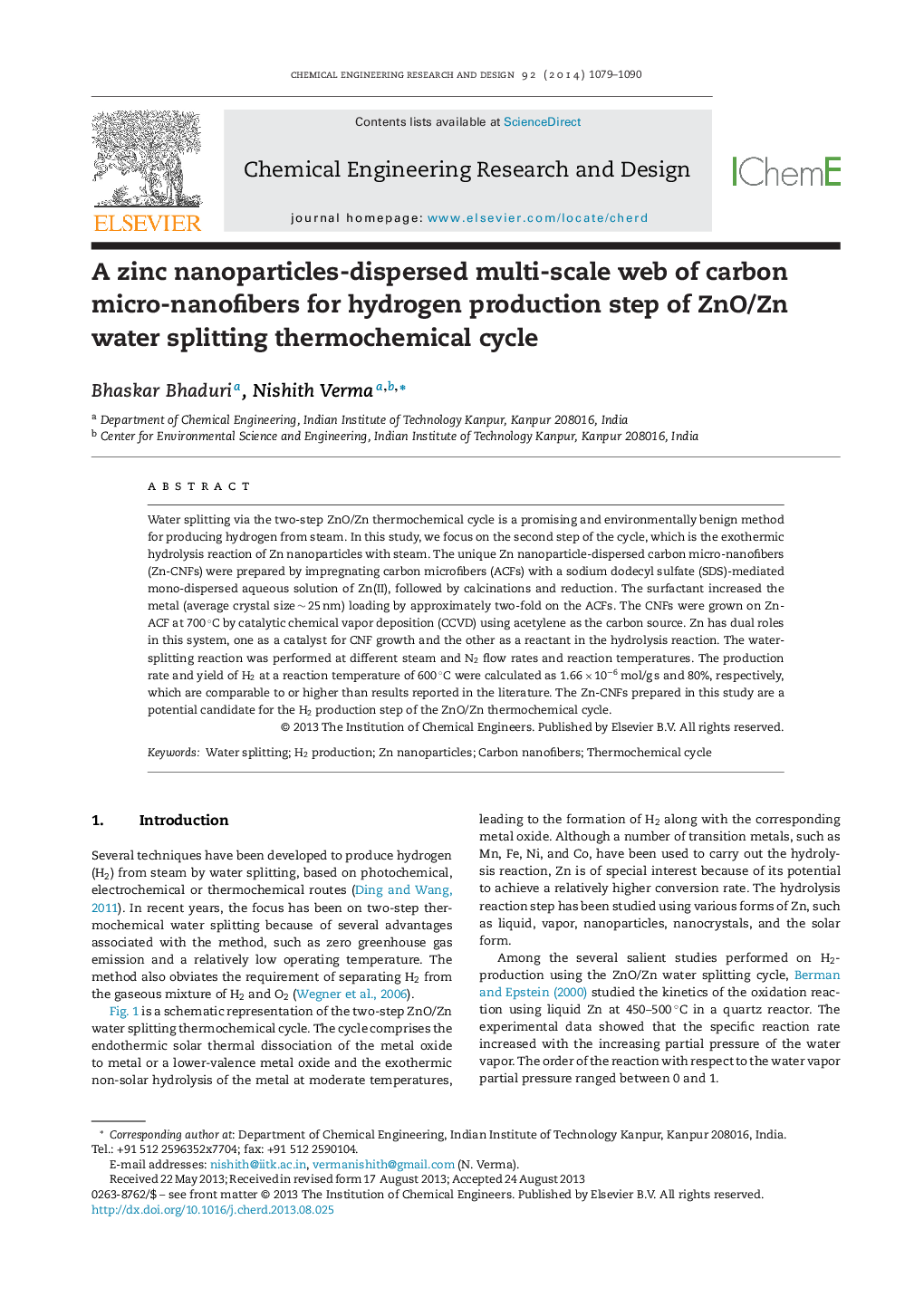| Article ID | Journal | Published Year | Pages | File Type |
|---|---|---|---|---|
| 620712 | Chemical Engineering Research and Design | 2014 | 12 Pages |
•Carbon nanofibers grown (CNFs) by chemical vapor deposition using Zn nanoparticles.•Zn-CNF used as an efficient material for H2 production from steam by water splitting.•Significant production rate (1.66 × 10−6 mol/g s) of H2 measured.•H2-yield comparable to or higher than the reported data in the literature.
Water splitting via the two-step ZnO/Zn thermochemical cycle is a promising and environmentally benign method for producing hydrogen from steam. In this study, we focus on the second step of the cycle, which is the exothermic hydrolysis reaction of Zn nanoparticles with steam. The unique Zn nanoparticle-dispersed carbon micro-nanofibers (Zn-CNFs) were prepared by impregnating carbon microfibers (ACFs) with a sodium dodecyl sulfate (SDS)-mediated mono-dispersed aqueous solution of Zn(II), followed by calcinations and reduction. The surfactant increased the metal (average crystal size ∼ 25 nm) loading by approximately two-fold on the ACFs. The CNFs were grown on Zn-ACF at 700 °C by catalytic chemical vapor deposition (CCVD) using acetylene as the carbon source. Zn has dual roles in this system, one as a catalyst for CNF growth and the other as a reactant in the hydrolysis reaction. The water-splitting reaction was performed at different steam and N2 flow rates and reaction temperatures. The production rate and yield of H2 at a reaction temperature of 600 °C were calculated as 1.66 × 10−6 mol/g s and 80%, respectively, which are comparable to or higher than results reported in the literature. The Zn-CNFs prepared in this study are a potential candidate for the H2 production step of the ZnO/Zn thermochemical cycle.
Graphical abstractFigure optionsDownload full-size imageDownload high-quality image (128 K)Download as PowerPoint slide
